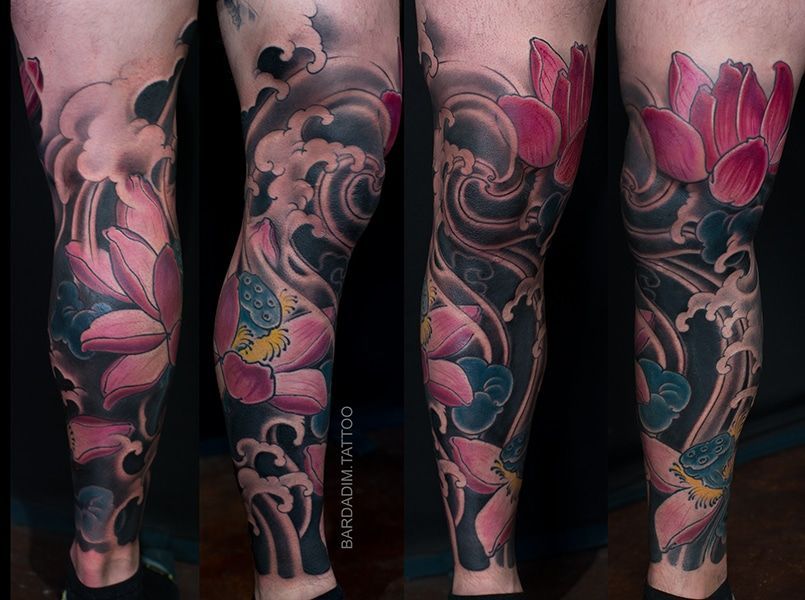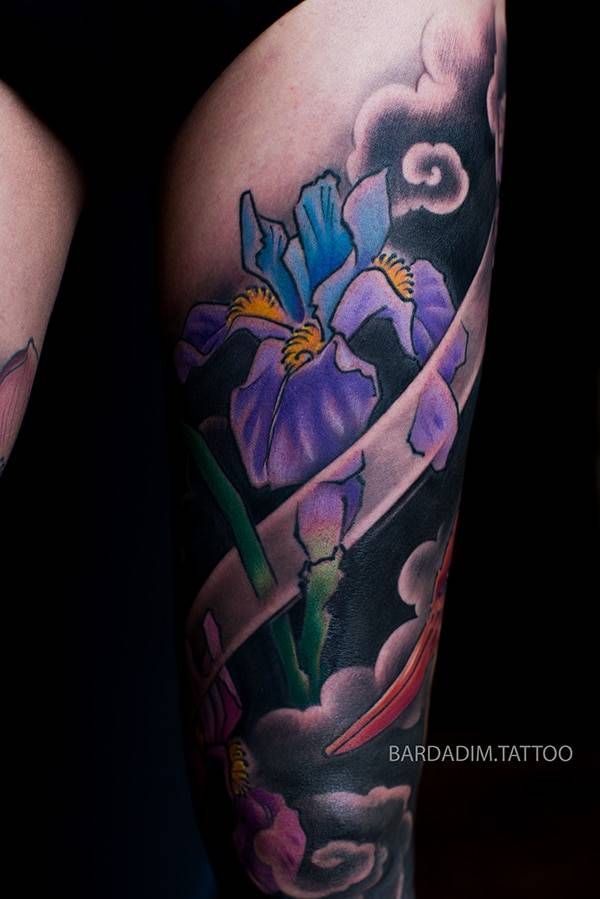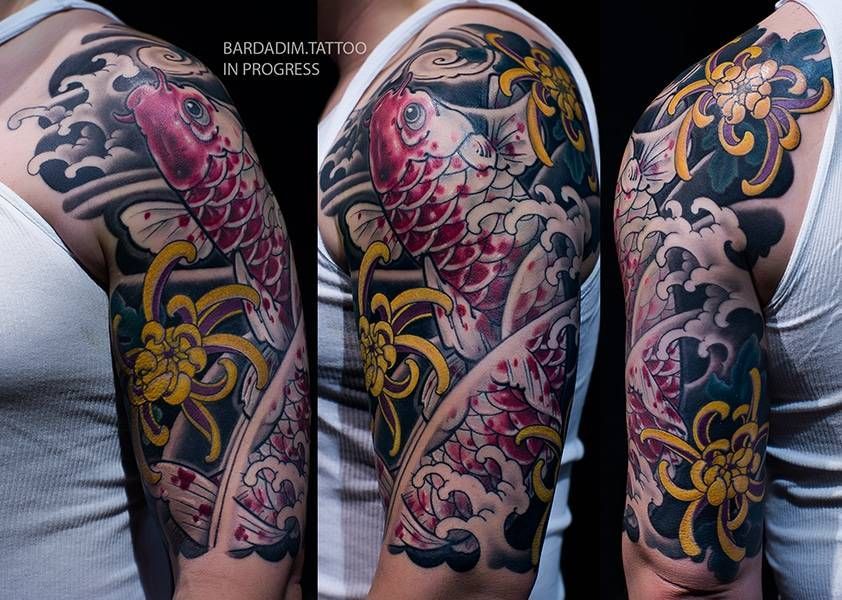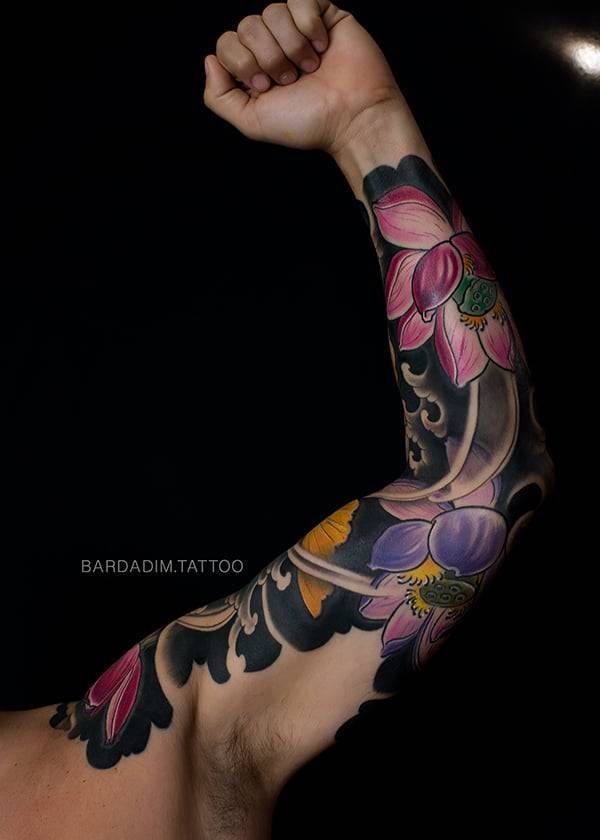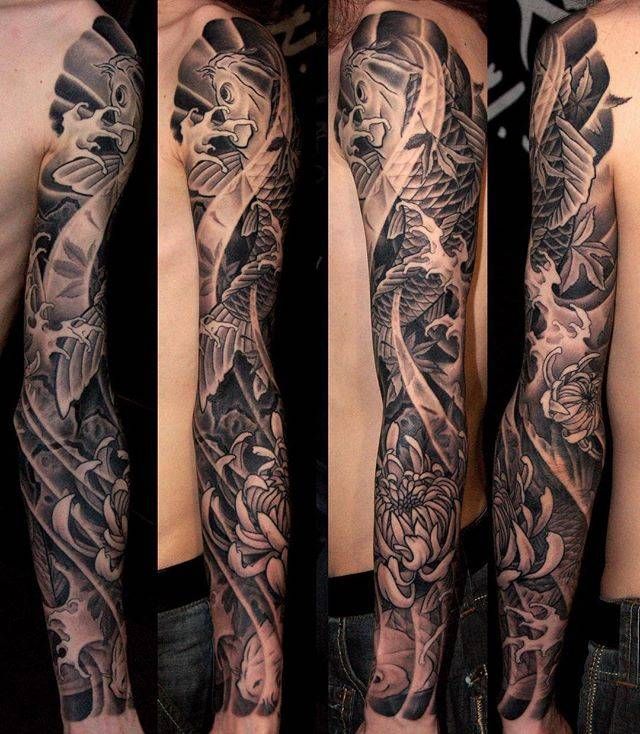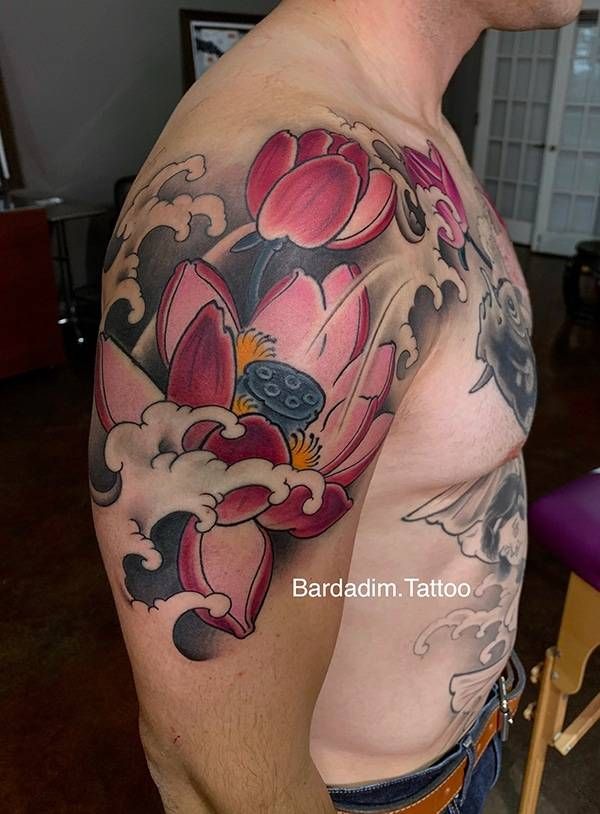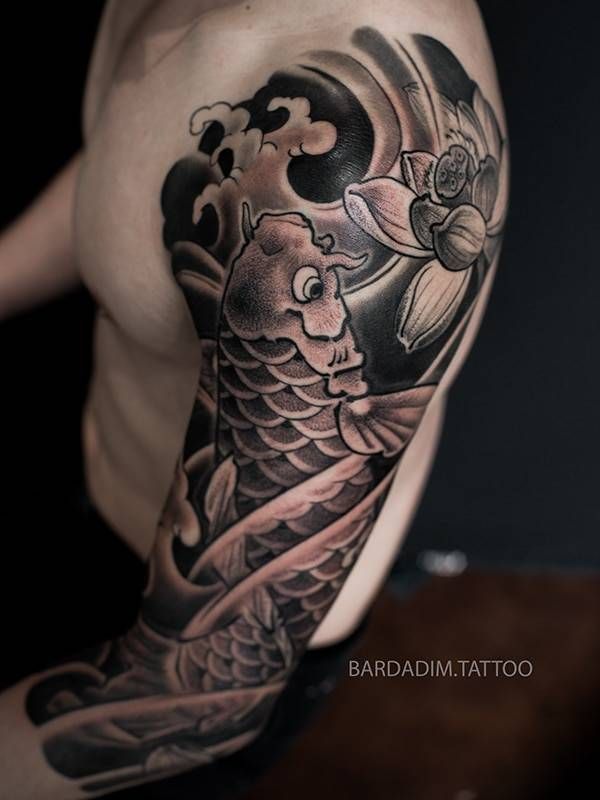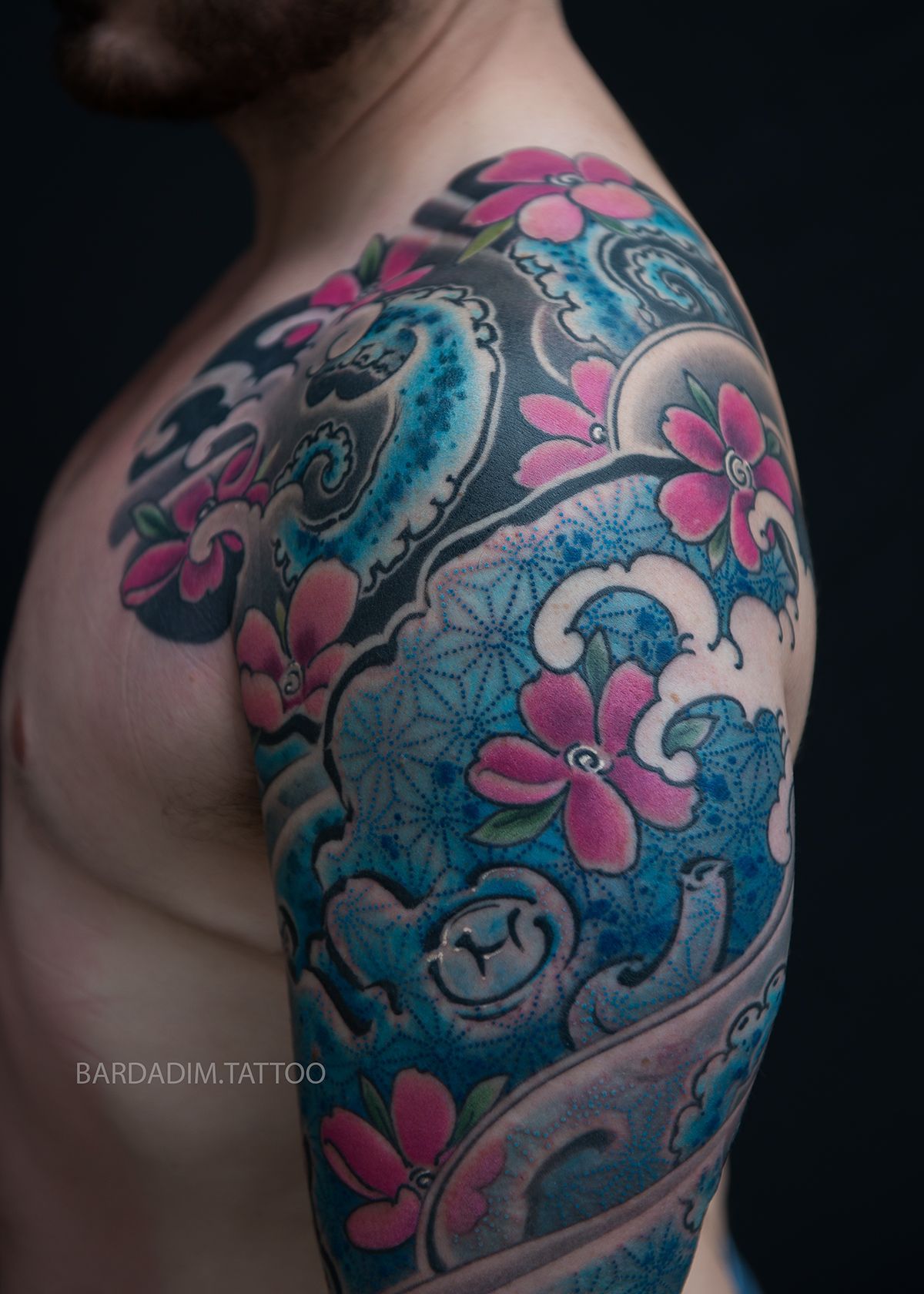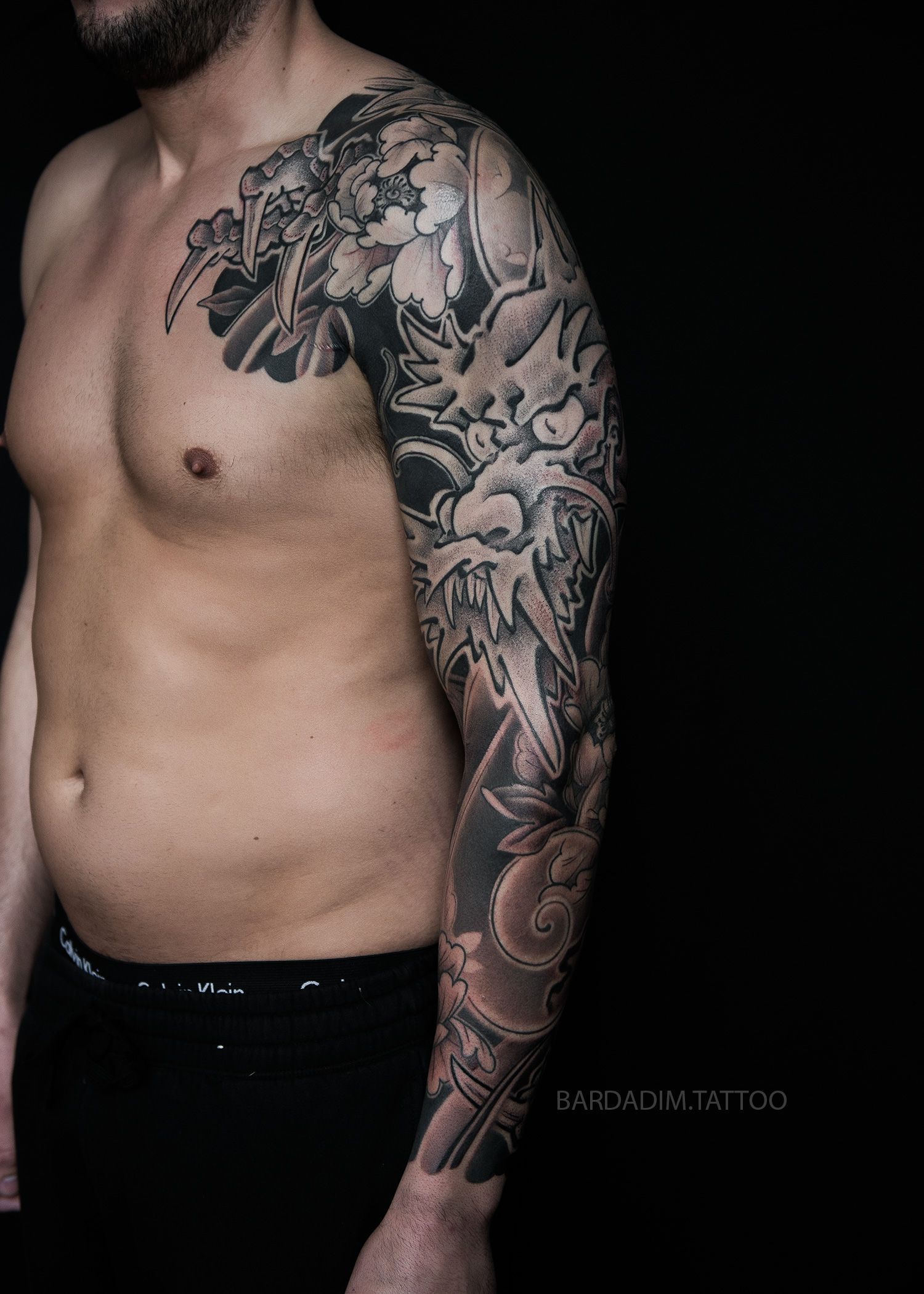Japanese Flower Tattoos
Almost every Japanese Design & Tattoo design will include Flowers. As a part of a composition or as complete Japanese Flower Tattoos.
Even those with little knowledge of Japan can’t help but notice the prominence of flower symbolism in Japanese culture . From cherry blossom, found everywhere from haiku verse to manga comics, to chrysanthemum, appearing on everything from crockery to coins, flower symbolism plays a vital role in Japanese art, literature and everyday life.
Being a spiritual, nature-loving nation influenced by Buddhist ideology, it is fitting that flower symbolism should form such a big part of the Japanese way of life (more about Japanese Flower )
Talking about Japanese Flower Tattoos you probably noticed some of the most popular – Peony, Chrysanthemum, Sakura and Lotus… here are few words about its meaning:
BOTAN (PEONY)
The Peony is considered the best of flowers and is known as the King of flowers. In short it means elegance and wealth. With it’s large and spreading petals, which are delicately curled at the edges, the peony has been called “the rose without thorns”. Although often depicted in tattoo imagery in deep red, it is today also cultivated in many other colours.
In the ornate, complex, and extensive body coverage that is typically involved in Japanese tattoos, it may seem as though entire gardens appear, but the floral repertoire of traditional Japanese tattoo is not as extensive as it might first appear, among the select flowers that are used is the peony, it is regarded as a symbol of wealth, good fortune and prosperity. In addition though, it also suggests a sort of gambling, daring and even a masculine devil-may-care attitude, quite unlike its character in the west.
MOMIJI (MAPLE LEAF)
One of the most popular backgrounds is the Japanese maple, a symbol of time passing, a symbol of the wind. the design often conveys the leaves as floating, carried on the wind or in the water. In Japan, it’s also the symbol of lovers. In some Japanese tattoo designs, canopies of maple leaves float over shoulders and drift over the torso.
A single leaf or a multitude of leaves are also potent symbols of regeneration and resurrection as they cycle through the seasons. Changing seasons are marked by the transformation of the leaves from trees. Spring, Summer, Fall and Winter are potent reminders of the circle of life, leaves are vivid reminders to us all of the life-and-death cycle of all living things. A tree losing the last of its leaves in the cold winds of autumn, to be stripped bare for the onset of winter has a poignancy that has long stirred the souls of poets, philosophers and men alike. The parallels of our own human lifetime are all too obvious. We could do worse than to meditate upon a rotting leaf on a damp forest path, often just a ghost of its former self. ‘This too will pass,” said the Buddha.
KIKU (CHRYSANTHEMUM)
This blossom is often portrayed as a symbol of perfection. The Japanese regard the chrysanthemum as their ‘solar flower’- the Japanese Imperial Family adopting it as their emblem and the Seal of the Emperor himself. The Emperor’s position is referred to as The Chrysanthemum Throne. The flower is depicted with petals radiating like flames from the sun, the centre of which symbolizes the Emperor’s status in the scheme of things. Longevity and joy are the attributes of both flower and worthy ruler. In Japan, the Imperial Order of the Chrysanthemum is the highest Order of Chivalry. Japan also has a National Chrysanthemum Day, which is called the Festival of Happiness.
Autumn is the season of this flower and in China the chrysanthemum is a symbol of Taoist simplicity and perfection. A time of tranquillity, completeness, and abundance following the harvest. Since it blooms right into winter, it may also symbolize the ability to mediate between life and death, between Heaven and Earth.
Although traditional Japanese tattoos give an initial impression of chaotic complexity and a seemingly infinite number of design elements from which to choose, such is not the case, In fact, traditional Japanese tattoos tend to be drawn from a smaller set of symbols – primarily the cherry blossom, the peony, and the chrysanthemum.
However, its symbolic link to longevity and happiness in Japanese culture may be draw more from its actual appearance. Circular and symmetric with numberless rays that flow from its centre, the chrysanthemum fits into the class of symbols that we recognize as solar. As a sun symbol, it immediately links to representations of life and longevity. While the cherry blossom of spring references the brevity and bright beauty of our transient lives, the chrysanthemum plays the opposite role in tattoo artwork. It is the flower of fall and of fullness, symbolizing not only a long life but a complete and happy one as well. ( In this gallery you can see Chrysanthemums as a Full Sleeve Japanese Flower Tattoo )
SAKURA (CHERRY BLOSSOM)
More often than not, when cherry blossoms appear in tattoo artwork, they do not appear alone. Sometimes a shame because the delicate and subtle beauty of these small blossoms is easily overwhelmed by other imagery. Even so, the centuries old Japanese tattoo tradition from which they spring, has essentially formalized their use in that way. Their powerful symbolism has taken on a life of its own. For Japanese imagery, the beautiful period of its flowering and then the all too soon fading and subsequent scattering of petals on the wind, they symbolize life itself. The fragility of the cherry blossom is the fragility of human existence, its brief period of life, like our own; its movement toward death, indifferent to the good things of this world, is the ideal death for a warrior; and finally, its individual and perfect beauty is also ours. Poignant for some but hopeful for others, the symbolism of this staple in tattoo artwork seems almost more than one flower could bear. However it does shoulder the burden perfectly. (Japanese Flower Tattoos showcasing Sakura and Plum cam be found in the Main Gallery )
HASU (LOTUS)
Lotus flowers are amazing and have strong symbolic ties to many Asian religions, especially throughout India and the lotus has become a symbol for awakening to the meaning of life. The meaning varies slightly between myth to myth of course but essentially religious traditions place importance on the lotus flower.
In modern times the meaning of a lotus flower tattoo ties into it’s religious symbolism and meaning. Most tattoo enthusiast feel that the a lotus tattoo represent life in general. As the lotus flower grows up from the mud into a object of great beauty people also grow and change into something more beautiful (hopefully!). So the symbol represent the struggle of life at its most basic form.
Lotus and peonies are flowers that are very popular among Japanese tattoo artists and they make a great compliment to Koi tattoos. Ironically enough, the two, koi fish and lotus flowers can often be found in the same pond in front of a temple. The Koi fish is a symbol typically for strength and individualism. ORIGINAL ARTICLE
This gallery showcasing Japanese Flower tattoos by George Bardadim, Tattoo Artist based in NYC


